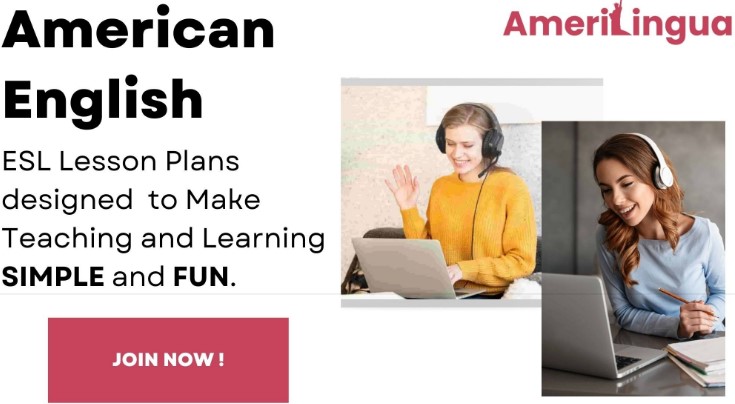If you’ve ever stood in front of a group of ESL students and watched their eyes glaze over halfway through a lesson, you’re not alone. Teaching English as a second language is incredibly rewarding—but it can also be challenging, especially when your students lose interest or struggle to grasp new concepts.
I’ve been teaching ESL for several years now, and one thing I’ve learned is that engagement is everything. When students are actively involved in their learning, they remember more, participate more, and, most importantly, enjoy the process. Whether you’re new to teaching ESL or looking to refresh your approach, having access to esl lesson plans that are both creative and practical can be a game changer.
In this article, I’ll walk you through some tried-and-true methods I use to keep my ESL classes dynamic and fun. We’ll cover what makes a lesson engaging, how to adapt to different proficiency levels, and where to find lesson plans that actually work in the classroom.
Why Engagement Matters in ESL Learning
Unlike native English speakers, ESL students are navigating a new language and often a new culture simultaneously. If a lesson feels too dry or disconnected from their daily lives, it’s easy for them to zone out. That’s why building engagement into every part of the lesson—whether through interactive activities, relatable content, or real-life context—is crucial.
Engagement isn’t just about fun. It’s also about relevance and application. When students see how a lesson connects to their goals—like finding a job, passing an exam, or communicating with friends—they’re more motivated to learn.
What Makes an ESL Lesson Plan Effective?
There’s no one-size-fits-all answer, but effective ESL lesson plans usually share a few key traits:
1. Clear Learning Objectives
Start each lesson with a clear, achievable goal. Whether it’s mastering the past tense or learning vocabulary related to shopping, make sure students know what they’re working toward.
2. Real-World Application
Students are more likely to engage with lessons that reflect real-world scenarios. Incorporating role-play, dialogues, or listening activities based on everyday interactions can bring a lesson to life.
3. Interactive Components
Games, group activities, and multimedia tools keep students involved. Interactive lessons help break down language barriers and encourage participation, even among shy learners.
4. Scaffolded Progression
Good lesson plans build on what students already know. Start simple, then gradually increase the complexity to help students feel confident as they progress.
Adapting Lesson Plans to Different Levels
Teaching beginner ESL students isn’t the same as teaching intermediate or advanced learners. That’s why it’s so important to customize your lessons based on your students’ skill levels.
-
Beginner: Use visuals, gestures, and repetition. Focus on basic vocabulary, sentence structure, and conversational phrases.
-
Intermediate: Start introducing more grammar concepts, reading materials, and structured writing exercises.
-
Advanced: Encourage debate, discussion, and nuanced writing assignments. Push students to express opinions and engage with complex texts.
No matter the level, well-structured esl lesson plans can help you stay on track while adapting the material to meet your students where they are.
Tips for Keeping ESL Classes Fun and Focused
I’ve tried dozens of different strategies in my classroom, and here are the ones that consistently make a difference:
1. Use Games with Purpose
Games like “20 Questions,” “Charades,” or “Two Truths and a Lie” can be powerful tools for practicing speaking and listening skills. Just make sure the game aligns with your lesson’s goals.
2. Incorporate Technology
Apps like Kahoot!, Quizlet, or even YouTube videos can help bring a lesson to life. A quick video clip followed by a group discussion or vocabulary quiz can add variety and boost comprehension.
3. Tell Stories
Storytelling is universal. Share short anecdotes or let students tell their own stories using new vocabulary and grammar. It’s a great way to practice fluency and build confidence.
4. Build Cultural Connections
Lessons that touch on music, holidays, food, or traditions from English-speaking countries help students understand context and feel more connected to the language.
5. Rotate Formats
Switch up your lesson format regularly. One day you might focus on a grammar worksheet; the next, you could run a speaking workshop. Variety keeps things fresh for both you and your students.
Where to Find Reliable ESL Lesson Plans
Let’s be honest—creating lesson plans from scratch every week is exhausting. It’s a time-consuming process that takes a lot of trial and error, especially if you’re juggling multiple classes or levels. That’s why I always recommend looking for trusted sources that provide structured, flexible lesson plans.
One of the best resources I’ve found is this collection of esl lesson plans. These plans are designed by experienced educators and cover a range of topics and skill levels. They’re easy to adapt, engaging for students, and incredibly helpful for busy teachers who want quality without the hassle.
Final Thoughts
Teaching ESL doesn’t have to feel like reinventing the wheel every time you step into the classroom. With the right tools, some creativity, and a solid understanding of your students’ needs, you can create lessons that are both educational and enjoyable.
Engagement is the key to learning. When students are involved and interested, they not only understand more—they want to learn more. That’s where thoughtfully designed esl lesson plans come in. They give you the structure and inspiration to make your classroom a place where students thrive.
If you’re looking for a boost in your teaching routine, don’t hesitate to explore new ideas, experiment with fresh approaches, and lean on resources that make your job easier. Your students—and your sanity—will thank you.
- How to Make ESL Lessons More Engaging: Tips and Strategies That Work
- How to Make ESL Lessons More Engaging: Tips and Strategies That Work
- esl lesson plans
Related posts:
 Engineering Design Assignment Help: Making Complex Projects Easier for Students
Engineering Design Assignment Help: Making Complex Projects Easier for Students
 Get Instant Last Minute Assignment Help in Australia by India Assignment Help
Get Instant Last Minute Assignment Help in Australia by India Assignment Help
 AI and Job Security: Discover Which Tech Roles Are Truly Safe in 2025
AI and Job Security: Discover Which Tech Roles Are Truly Safe in 2025
 How to Get Started with Web Development as a Beginner: Complete Guide
How to Get Started with Web Development as a Beginner: Complete Guide
 Powerful Legacy of Bhai Balwinder Singh Jatana: A Heroic Journey
Powerful Legacy of Bhai Balwinder Singh Jatana: A Heroic Journey
 CUET PG 2026: Your Complete Guide to the Central University Entrance Test for Postgraduate Programs
CUET PG 2026: Your Complete Guide to the Central University Entrance Test for Postgraduate Programs
 Master the Markets with Expert-Led Stock Market Classes Only at ICFM in Delhi and Online
Master the Markets with Expert-Led Stock Market Classes Only at ICFM in Delhi and Online







